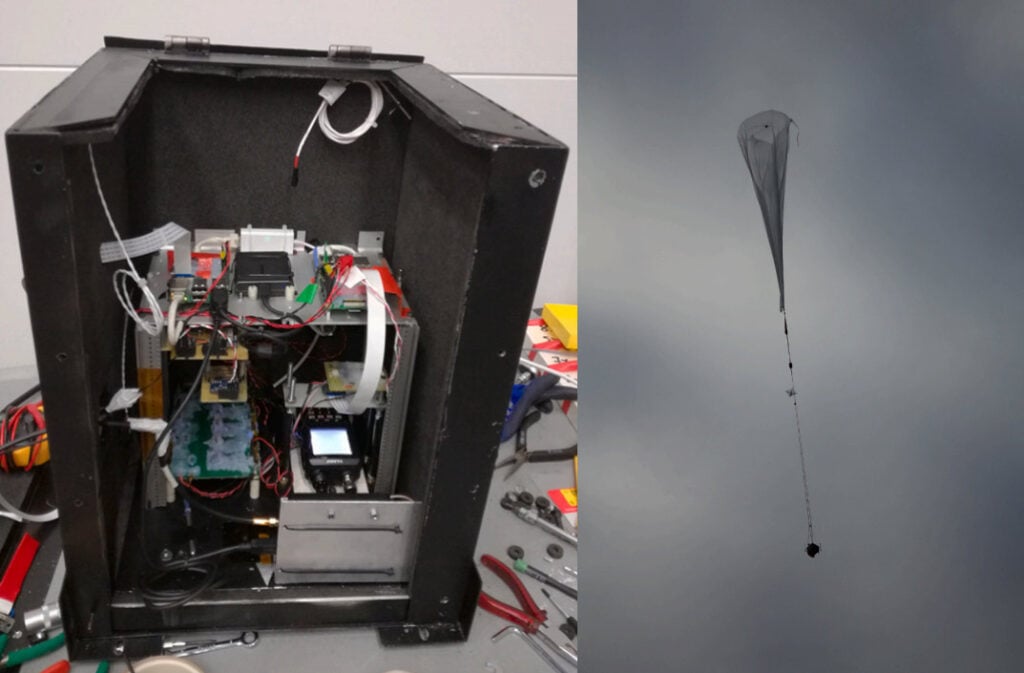Testing VOR Navigation in the Stratosphere with an SDRplay RSP1 and High Altitude Balloon
Over on the SDRplay blog Jon has posted about the STRATONAV experiment which makes use of the SDRplay RSP1 software defined radio. The STRATONAV experiment uses high altitude balloons to carry the RSP1 as well and a commercial portable receiver. The two receivers were configured to receive aircraft VOR navigation signals in order to test the effectiveness of VOR when used at extreme altitudes of up to 28 km. The VOR navigational data was then compared against GPS tracks, resulting in a measure of how well VOR worked at those altitudes.
VOR (aka VHF Omnidirectional Range) is a navigational beacon that is transmitted between 108 MHz and 117.95 MHz from a site usually at an airport. In the past we have posted about VOR a few times as it can also be decoded with an RTL-SDR, or used for passive doppler aircraft radar.
The results showed that VOR navigation does indeed continue to function at extreme altitudes, proving that it can be used as a back up navigation system for stratospheric platforms. They also note that VOR navigation could also be used as a primary navigation system on smaller stratospheric platforms due to its low cost and low complexity to implement.
The full academic paper is available on sciencedirect, or for free via Sci-Hub.

